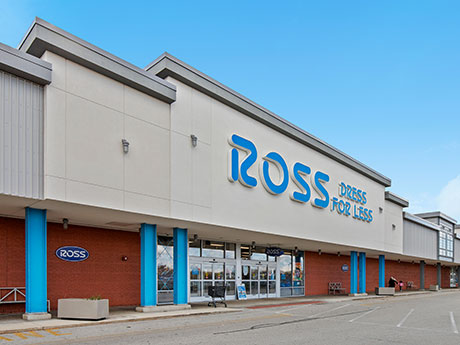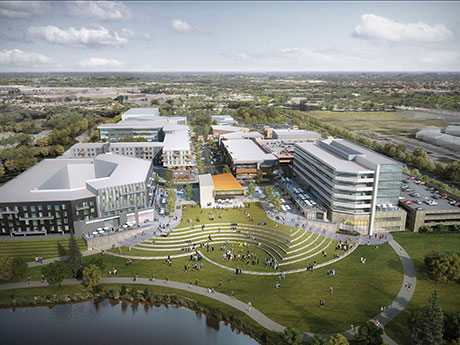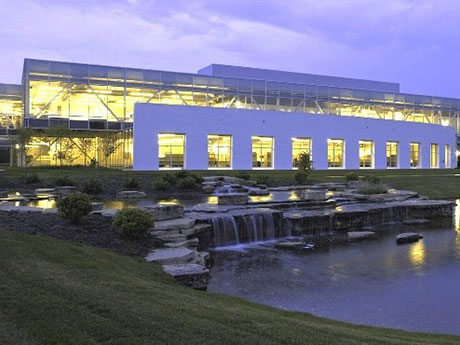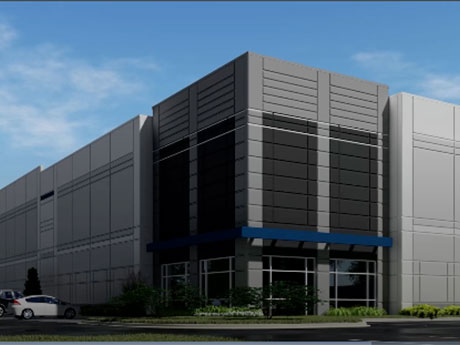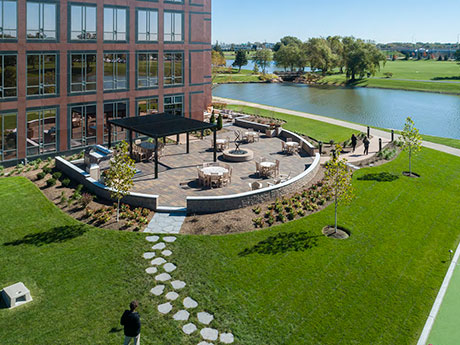By Adam Connor, Colliers When the pandemic hit in 2020, most of the media jumped to write articles about the downfall of retail properties and how shoppers were going to get all their goods flown from drones from their Amazon overlords. The reality is that every day, normal people shop at grocery stores, go work out at the gym, and buy lunch or dinner somewhere. Now that 2020 is far behind us, the 2023 retail landscape in the Milwaukee region looks much different. Most of the retail space, including the mid-box and big-box vacancies, have been backfilled and, as a result, owners saw healthy rent growth in their assets. With the lack of construction over the past five to seven years, retailers are now competing for high quality space and paying a premium in rent to be located there. With only 134,000 square feet under construction and a 12-month absorption of 660,000 square feet, quality space is in high demand. Asking rents are up 7 percent to $14.80 since the second quarter of 2020 and vacancy is down to 5 percent. Development The Milwaukee area has some large development projects that are underway, including Fiserv moving its corporate headquarters back …
Midwest Market Reports
By Tony Colvin and Michael Fitzgerald, Mid-America Real Estate In the absence of significant new construction, the evolution of the retail real estate market in Milwaukee is largely being driven by the conversion and demolition of existing spaces. Some prominent places are being reimagined in creative ways that often include multifamily and other uses in addition to retail. HUB640 in downtown Milwaukee is a perfect example. A historic building formerly occupied by a Boston Store, the property is being transformed by North Wells Capital and Urban Innovations Management. The new mixed-use project will feature Kohl’s as the retail anchor tenant, loft apartments and office space occupied by Fiserv’s corporate headquarters. Other corporate office users, including Milwaukee Tool and Northwestern Mutual, also are betting on the central business district (CBD), with Milwaukee Tool relocating upwards of 1,200 employees, and Northwestern Mutual redeveloping and enlarging its headquarters. At the same time, new multifamily high-rises are remaking the architecture of Milwaukee including the river and lakefronts. The 25-story Ascent opened last year, and 333 North Water (31 stories) and Couture (44 stories) are on the horizon. Additionally, Iron District MKE is an 11-acre mixed-use sports and entertainment development slated to be phased in …
By Eric Rose and Erick Tjarks, Cresa The Omaha office market proved to be somewhat insular from the effects of the many factors the real estate industry has experienced since 2020 (COVID-19, the hybrid work-from-home model, discussions of impending recession to name a few). Although down year-over-year, which given the recent interest rate hikes is expected, market sales volume remains above-average over the surveyed period going back to 2007. Though, this transaction volume dropped precipitously in the second half of 2022 and has continued to be slow in early 2023. However, the local market has seen pockets of increased activity, as Northwest Omaha saw heightened transactional volume, with Midtown Omaha, downtown Council Bluffs and suburban West Dodge following suit. As showcased above, market cap rates have largely accounted for interest rate hikes and are currently stable but subject to future interest rate increases. These statistics all point to a stable market, with fundamental performance on solid footing. However, it should be noted that, according to CoStar, 2022 is only the second year on record when demolitions outpaced gross deliveries, with only 93,000 square feet of net deliveries Omaha ranked in the bottom 10 of the top 60 office markets …
By Holly Jones and Trey MacKnight, Cushman & Wakefield/The Lund Co. The world of retail real estate in the Midwest has been rapidly evolving over the past few years, with the pandemic serving as a catalyst for more change. As we move further into 2023, it’s becoming increasingly clear that the retail landscape is different than in years past, yet healthy in numbers. In this article, we’ll explore and explain some of the latest trends, developments, absorption and vacancy, and how this is impacting the industry as a whole. Whether you’re a retailer, landlord or investor, it’s essential to stay up to date with the current market and future developments. Omaha’s retail market recorded 350,931 square feet of positive absorption in the fourth quarter, bringing the year-to-date absorption total to 1 million square feet. Throughout 2022, there were 34 buildings delivered, increasing the retail inventory by 379,733 square feet. At the close of the year, more than 86 percent of the new construction was occupied, creating a very healthy environment. While there were sizable deals inked throughout the year, just over 85 percent of the new leases signed were under 5,000 square feet. Many of the leases were signed by …
By Aaron Duncan, CBRE Describing Central Ohio’s current office market conditions is like a kid making the “little bit of everything” drink at the self-serve soda fountain: a lot of ingredients go in and the result is, surprisingly, okay. The office market is filled with polarizing headlines — from the growth and success of suburban Class A+ product versus newly vacated assets, to sublease space swarming the stat line, and everything in between. Moreover, the sector continues to provide pools of negative and positive market conditions. One’s perspective on the market largely depends on which way they’re standing in that month but overall, much like that childhood concoction, it’s okay. The good and the bad For nearly three years, tenants leaned on ownership groups to let them put temporary solutions in place while they fully vetted their return-to-work strategies. Today, the good news is that tenants have finally figured it out and are confident about what their current and future footprints will look like. A strong indicator of this is the volume of headquarters transactions in the market, five of which were completed by our team: • Vertiv: 75,000-square-foot, suburban headquarters lease at 505 N. Cleveland Ave. • Surge Staffing: …
By Beau Taggart, Cushman & Wakefield Historically, Columbus was a steady-performing, secondary industrial market that saw minimal rent increases. Often, it was overshadowed by “big brother” cities such as Indianapolis and Chicago that were perceived as more appealing to institutional investors. After the great recession of 2008, though, Columbus began to mature economically, and the region began its meteoric rise as a leading big-box industrial market in the U.S. Located at the intersection of Interstates 70 and 71, within a day’s drive of 46 percent of the U.S. population and containing one of the only freight-only airports in the country, Rickenbacker Airport, Columbus began to attract more and more major retailers such as Zulily, Lululemon, Macy’s and Sam’s Club as well as e-commerce giant Amazon, which has opened several bulk facilities throughout the region. Additionally, three major intermodal terminals and major UPS and FedEx hubs strategically located throughout the area boosted Columbus from its secondary status to a primary inland hub on every major distributor’s radar. Like many markets, 2021 was Columbus’s most prolific year. Interest rates were at an all-time low, and users were compensating for COVID-fueled consumer demand. Asking rates grew by 14 percent and vacancy shot down …
By Jeff Budish, Northmarq Three years in, and the COVID-19 pandemic has immensely altered how multifamily and commercial properties are utilized, located and valued. Now with interest rate changes, all product types have seen a hit from the change in the cost of capital. While challenges are on the horizon, Midwest markets, including Minneapolis-St. Paul, should see less shake up than elsewhere. Despite rising interest rates, recession worries and nagging inflation, the Twin Cities multifamily sector is resilient. Vacancies remain low, demand is outpacing supply and rents are solid. Year over year, apartment rents in the Twin Cities area are up 5 percent. While COVID changed the dynamics of all product types, it explicitly impacted multifamily. The increase in remote work meant employees were not tethered to a physical office. Many people moved away from their workplaces in densely populated areas to the suburbs. However, Minneapolis and St. Paul proper generally saw net outbound demographic shifts. Valuations over the past two years therefore didn’t include additional inflated pricing based on speculation of continual inbound movement. There is also soaring demand for apartments due to an increase in the number of Americans living on their own, roommate-free. In an AvalonBay public …
By Mark Kolar, Cresa There’s been a lot of news recently about the financial pressures facing suburban Chicago commercial office landlords who have financed their office buildings via commercial mortgage-backed securities (CMBS) loans. While the financial challenges these buildings face continue to grab the headlines, there is a much less visible yet greater amount of privately funded commercial office landlords that could be facing dire financial changes over the next couple of years. These privately funded loans that originated through major banks and insurance companies are seeing just as much, if not more, stress than their CMBS counterparts. Collectively we’re seeing significant systemic issues for all Chicago commercial office landlords with no clear path to a solution in sight. In suburban Chicago, about 13 percent of commercial office loans are financed by CMBS loans with the majority of loan debt financed through local financial institutions, private investment funds and insurance companies. While details on these loans is not as readily available as their CMBS counterparts, many office landlords are confronting similar challenges. Both CMBS and privately funded commercial landlords and their lenders are facing a host of capital challenges that revolve around systemic changes in leasing activity, increasing costs of …
By Tyler Ziebel, Colliers Following one of the most active and aggressive periods in Chicago’s industrial capital markets history, 2022 ended as a year most market participants would rather forget. As the buying community returned to their desks and fastened their seatbelts for another year of fun in 2023, industrial sales brokers across the country are starting the year posed with a question from investors that hasn’t been asked in some time: “What are we going to be able to buy this year?” It’s easy to assume that investors will remain content to sit out of the turbulent market, but the answer to where we are, and aren’t, seeing liquidity requires a nuanced answer. In order to do that, we must take a quick look at 2022 and what set this uncertain market in motion. After several record-setting years for industrial leasing and sales in 2020 and 2021, accelerated by the COVID pandemic and a historically low interest rate environment, 2022 opened with the same frenzied pace and enthusiasm of 2021. But as the Federal Reserve pivoted its focus from keeping the economy stable to taming the resulting inflation, rapidly rising interest rates grounded institutional industrial transactions and development deals …
By Jennifer Hopkins, MBA and Olivia Czyzynski, SVN Chicago Commercial The commercial real estate (CRE) industry has traditionally been relatively stable but can be impacted by the economy with normal ups and downs based on economic fluctuations. However, when COVID-19 hit, it was unprecedented and something the world had not seen in many years. The CRE industry started preparing for the changes that came along, including business shutdowns and many employees working from home. Although it was expected that the retail market would be the hardest hit sector, it turned out that the office market ended up being significantly impacted. The overall issues and pending work-from-home approach have had a major ripple effect on office markets across the nation. The Chicagoland market was impacted particularly hard, and this included the suburban Chicago markets. Chicagoland is broken out into several main commercial hubs: the city of Chicago, the East-West Corridor, the O’Hare market, the Northwest suburbs and the North suburbs. According to CoStar, office vacancy rates increased in all these markets. In 2020, the vacancy rates ranged from 7 to 20 percent, but currently stand at 18.8 percent, 17.3 percent, 16.9 percent, 23.2 percent and 11 percent, respectively. While no market …


